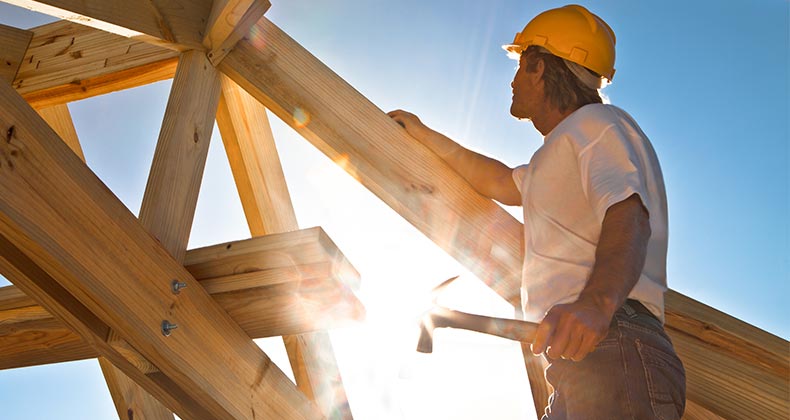mortgage

© sculpies/Shutterstock.com
The complexities of home construction loans can hit you like a falling 2-by-4. Be sure you understand the intricacies before you apply.
2 types of construction loans
There are 2 main types of home construction loans:
- Construction-to-permanent: With these loans, the lender advances the money to pay for construction. After the home is built, the same lender rolls the loan balance into a standard mortgage. This is by far the more popular option.
- Stand-alone construction: With these loans, it’s often the lender that advances money to build the house. When construction is finished, you get a mortgage to pay off the construction debt.
With a construction-to-permanent loan, there is one closing. During construction, you pay only interest on the outstanding loan balance. It converts into a mortgage after the home is built. You lock a maximum mortgage rate at the beginning, when construction begins.
A stand-alone construction loan could be worthwhile if it allows a smaller down payment. Because this type of loan doesn’t allow you to lock a maximum mortgage rate in advance, you risk a rise in interest rates. Another disadvantage is that your circumstances could change during construction, making it impossible to qualify for a permanent loan. And you pay for 2 closings:
- Once, on the construction loan.
- And later, on the mortgage.
RATE SEARCH: Shop today for a mortgage.
More difficult to qualify
Qualifying for a construction-to-permanent loan could be more onerous than getting a regular mortgage. This is because the lender doesn’t have the completed house as collateral to back the loan during the construction period.
Your down payment is likely to be at least 20% of the loan amount, although some lenders go as low as 10%. The lender will determine whether you can afford the loan payments during construction while you’re paying the rent or mortgage on your current home.
Have adequate savings
The lender will make sure you have savings to pay for unexpected costs. “There are always cost overruns when you are building a home that you may not know about until you are into it. We don’t want them to use every last dime they have before they start,” says Dennice Henshaw, east side division manager for Washington Federal in Seattle.
Cost overruns tend to come about because borrowers have a tendency to change their minds about what they want as construction proceeds.
Do your due diligence on the builder
An important aspect of building your home is choosing the right builder. Find one that has built the kind of house you want in terms of price, style and size. Look into the builder’s credentials with the local homebuilders association and ask for references from previous clients. You could also see if there are any complaints against the builder with the Better Business Bureau.
Typically, your lender will look into the builder’s credit standing, financial situation and licenses, as well as the track record for building similar homes.
Ongoing inspections
Lenders will conduct routine inspections as the home is built. During this period, the lender pays the builder in stages — called “draws” — and usually sends an appraiser or inspector to make sure that construction proceeds as planned.
Cynthia DeLuca, group mortgage manager for BB&T in Raleigh, North Carolina, says, “Our clients could get upside down, where they have 50% of the loan but the house is only 25% done. We look at how much it is going to cost to complete the house to try to stay on track.” Typically, you sign off on each draw request so that you are kept informed how the work is proceeding.
SEARCH RATES: Ready for a mortgage with a low down payment? Search now for an FHA loan.
advertisement
JUL
[related_posts_content limit="5" title="Related Posts"]














